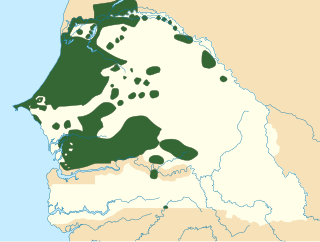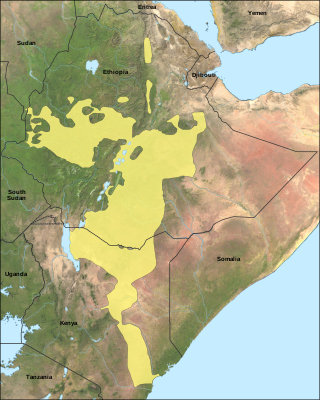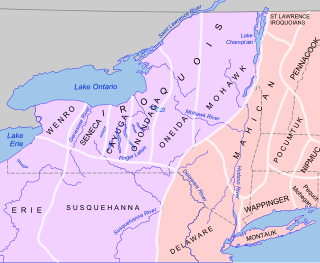Related Research Articles
A lexeme is a unit of lexical meaning that underlies a set of words that are related through inflection. It is a basic abstract unit of meaning, a unit of morphological analysis in linguistics that roughly corresponds to a set of forms taken by a single root word. For example, in English, run, runs, ran and running are forms of the same lexeme, which can be represented as RUN.
A morpheme is the smallest meaningful constituent of a linguistic expression. The field of linguistic study dedicated to morphemes is called morphology.

In linguistics, morphology is the study of words, how they are formed, and their relationship to other words in the same language. It analyzes the structure of words and parts of words such as stems, root words, prefixes, and suffixes. Morphology also looks at parts of speech, intonation and stress, and the ways context can change a word's pronunciation and meaning. Morphology differs from morphological typology, which is the classification of languages based on their use of words, and lexicology, which is the study of words and how they make up a language's vocabulary.

Turkish is the most widely spoken of the Turkic languages, with around 90 to 100 million speakers. It is the national language of Turkey and Northern Cyprus. Significant smaller groups of Turkish speakers also exist in Germany, Austria, Bulgaria, North Macedonia, Greece, Cyprus, other parts of Europe, the South Caucasus, and some parts of Central Asia, Iraq, and Syria. Turkish is the 18th most spoken language in the world.
A verb is a word that in syntax generally conveys an action, an occurrence, or a state of being. In the usual description of English, the basic form, with or without the particle to, is the infinitive. In many languages, verbs are inflected to encode tense, aspect, mood, and voice. A verb may also agree with the person, gender or number of some of its arguments, such as its subject, or object. Verbs have tenses: present, to indicate that an action is being carried out; past, to indicate that an action has been done; future, to indicate that an action will be done.
Amharic is an Ethiopian Semitic language, which is a subgrouping within the Semitic branch of the Afroasiatic languages. It is spoken as a first language by the Amharas, and also serves as a lingua franca for all other populations residing in major cities and towns in Ethiopia.

Wolof is a language of Senegal, Mauritania, and the Gambia, and the native language of the Wolof people. Like the neighbouring languages Serer and Fula, it belongs to the Senegambian branch of the Niger–Congo language family. Unlike most other languages of the Niger-Congo family, Wolof is not a tonal language.
Fusional languages or inflected languages are a type of synthetic language, distinguished from agglutinative languages by their tendency to use a single inflectional morpheme to denote multiple grammatical, syntactic, or semantic features.

Oromo, historically also called Galla, is an Afroasiatic language that belongs to the Cushitic branch. It is native to the Ethiopian state of Oromia and Northern Kenya and is spoken predominantly by the Oromo people and neighboring ethnic groups in the Horn of Africa. It is used as a lingua franca particularly in the Oromia Region and northeastern Kenya.

Shoshoni, also written as Shoshoni-Gosiute and Shoshone, is a Numic language of the Uto-Aztecan family, spoken in the Western United States by the Shoshone people. Shoshoni is primarily spoken in the Great Basin, in areas of Wyoming, Utah, Nevada, and Idaho.
The imperfective is a grammatical aspect used to describe ongoing, habitual, repeated, or similar semantic roles, whether that situation occurs in the past, present, or future. Although many languages have a general imperfective, others have distinct aspects for one or more of its various roles, such as progressive, habitual, and iterative aspects. The imperfective contrasts with the perfective aspect, which is used to describe actions viewed as a complete whole.
Yaqui, locally known as Yoeme or Yoem Noki, is a Native American language of the Uto-Aztecan family. It is spoken by about 20,000 Yaqui people, in the Mexican state of Sonora and across the border in Arizona in the United States. It is partially intelligible with the Mayo language, also spoken in Sonora, and together they are called Cahitan languages.
Wiyot or Soulatluk (lit. 'your jaw') is an Algic language spoken by the Wiyot people of Humboldt Bay, California. The language's last native speaker, Della Prince, died in 1962.

Klallam,Clallam, Ns'Klallam or S'klallam, is a Straits Salishan language that was traditionally spoken by the Klallam peoples at Becher Bay on Vancouver Island in British Columbia and across the Strait of Juan de Fuca on the north coast of the Olympic Peninsula in Washington. The last speaker of Klallam as a first language died in 2014, but there is a growing group of speakers of Klallam as a second language.
Proto-Indo-European verbs reflect a complex system of morphology, more complicated than the substantive, with verbs categorized according to their aspect, using multiple grammatical moods and voices, and being conjugated according to person, number and tense. In addition to finite forms thus formed, non-finite forms such as participles are also extensively used.
In linguistics, apophony is any alternation within a word that indicates grammatical information.

Seneca is the language of the Seneca people, one of the Six Nations of the Hodinöhsö꞉niʼ ; it is an Iroquoian language, spoken at the time of contact in the western part of New York. While the name Seneca, attested as early as the seventeenth century, is of obscure origins, the endonym Onödowáʼga꞉ translates to "those of the big hill." About 10,000 Seneca live in the United States and Canada, primarily on reservations in western New York, with others living in Oklahoma and near Brantford, Ontario. As of 2022, an active language revitalization program is underway.
Wintu is a Wintu language which was spoken by the Wintu people of Northern California. It was the northernmost member of the Wintun family of languages. The Wintun family of languages was spoken in the Shasta County, Trinity County, Sacramento River Valley and in adjacent areas up to the Carquinez Strait of San Francisco Bay. Wintun is a branch of the hypothetical Penutian language phylum or stock of languages of western North America, more closely related to four other families of Penutian languages spoken in California: Maiduan, Miwokan, Yokuts, and Costanoan.

The Natchez language is the ancestral language of the Natchez people who historically inhabited Mississippi and Louisiana, and who now mostly live among the Muscogee and Cherokee peoples in Oklahoma. The language is considered to be either unrelated to other indigenous languages of the Americas or distantly related to the Muskogean languages.
The roots of the reconstructed Proto-Indo-European language (PIE) are basic parts of words that carry a lexical meaning, so-called morphemes. PIE roots usually have verbal meaning like "to eat" or "to run". Roots never occurred alone in the language. Complete inflected verbs, nouns, and adjectives were formed by adding further morphemes to a root and potentially changing the root's vowel in a process called ablaut.
References
- ↑ "What is cessative aspect?". SIL International. 5 January 2004. Archived from the original on 14 December 2013. Retrieved 10 December 2013.
- ↑ Dedrick, John M.; Casad, Eugene H. (1999). Sonora Yaqui Language Structures. University of Arizona Press. p. 322. ISBN 9780816519811.
- ↑ Dayley, Jon P. (1989). Tümpisa (Panamint) Shoshone Grammar. University of California Press. p. 59. ISBN 9780520097520.